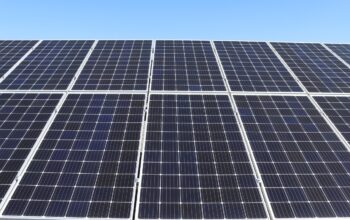Hook: Why Green Hardware Matters Now More Than Ever Picture the future of tech as a vast landscape where every gadget, building, and machine not only serves us but also takes care of the planet. That may sound idealistic, but today’s environmental sustainability trends in hardware are turning that vision into reality.
Here’s a roundup of five real-world hardware trends making waves in 2025 — practical, impactful, and designed to help companies and communities shrink their carbon footprints.
1. Green Data Centers: The Powerhouses That Think Green
Imagine a data center like the brain behind your digital world. But these brains are power-hungry, traditionally gulping electricity like it’s going out of style. Now, “green” data centers are the new norm. They use advanced cooling techniques, renewable energy, and energy-efficient server designs to slash electricity needs dramatically. The shift isn’t just buzz — it’s about tackling IT’s big carbon footprint, which accounts for a few percent of global emissions today and could approach double digits in the decades ahead.
Companies are racing to adopt these centers as a cornerstone of sustainable IT infrastructure, proving that technology and ecology can go hand in hand.
2. Smart, ESG-Driven Buildings: Living and Breathing Sustainability
Buildings are no longer dumb boxes consuming energy blindly. Thanks to AI and predictive maintenance, smart buildings optimize everything from heating to lighting. Sensors collect data around the clock, and AI predicts equipment failures before they happen, prolonging machinery life and saving energy.
What’s more, these buildings come equipped with software systems that help owners automatically generate reports on energy usage and regulatory compliance, making ESG (Environmental, Social, and Governance) reporting easier and more transparent. This kind of technology is rapidly becoming vital for property investors who value sustainability as a key asset.
3. Electrification of Agricultural Machinery: Farming Goes Green
Farming, one of the oldest human professions, is going high-tech and green with electrified tractors and hybrid implements. Leading companies like Solectrac and Mahindra are spearheading this move, with electric tractors gaining significant market traction.
Government incentives, like hefty USDA grants and equipment subsidies, are accelerating this shift. The benefits are clear — reduced emissions, lower operational costs, and less noise pollution for farming communities.
Additionally, carbon footprint monitoring tools are empowering farms to track and cut their greenhouse gas emissions in real time, blending technology with age-old farming traditions for a sustainable boost.
4. Blockchain-Enabled Traceability in Farming: Transparency from Field to Fork
Consumers want to know exactly where their food comes from and how it was produced, and blockchain technology is stepping in to provide that certainty.
This hardware-software combo delivers foolproof traceability across the entire supply chain, from seed planting to supermarket shelves. It builds trust by ensuring food claims about sustainability aren’t just empty words but verifiable facts.
This tech is especially transformative for sectors like grains, textiles, and fresh foods.
5. ISO Certified Sustainable Manufacturers Leading by Example
Lastly, companies like Vontier are showing how hardware manufacturers can drastically reduce their environmental impact. By achieving ISO 14001 certification — a gold standard for environmental management — and cutting greenhouse gas emissions by 40%, they’re setting benchmarks others will follow.
This progress isn’t just corporate greenwashing; it’s a genuine operational commitment with measurable safety and environmental results.
Conclusion: The Hardware of a Greener Tomorrow The five hardware trends outlined here demonstrate a remarkable shift: sustainability is no longer an add-on but integral to design, production, and everyday use. Whether it’s servers that sip electricity, buildings that think for themselves, or silent electric tractors plowing fields, the future hardware ecosystem is rooted in responsibility.
For businesses and employees alike, these advancements offer both a chance and a challenge – to embrace sustainable tools that not only work better but also respect the planet. After all, we only get one Earth, and the tech we choose today shapes the world we’ll leave for tomorrow.
Bullet Summary:
- Green data centers cut IT carbon emissions through efficient design and renewable energy
- Smart buildings use AI to save energy and streamline ESG compliance
- Electric tractors and hybrid farm equipment revolutionize sustainable agriculture
- Blockchain traceability tech ensures honest, transparent food sourcing
- Manufacturers achieving ISO 14001 demonstrate real environmental leadership
With these trends, sustainability hardware is no longer science fiction — it’s everyday reality, reshaping how we live and work.
References:
- https://digitalconfex.com/top-10-it-trends-that-will-define-the-future-of-technology-in-2025/
- https://wp.table.media/wp-content/uploads/2025/06/25162057/SWD-Impact-assessment-report-part2.pdf
- https://www.netguru.com/blog/smart-buildings-esg-driven-proptech
- https://www.vvc.edu/sites/default/files/2025-06/2025SU-ACTIVE-SLO-REPORT-06-23-2025.xlsx
- https://farmonaut.com/precision-farming/ag-equipment-for-sale-2025-tech-trends-powering-growth
- https://www.oecd.org/en/publications/building-beneficiary-capacity-under-eu-cohesion-policy_c2efa2e2-en/full-report/understanding-the-beneficiaries-of-european-union-cohesion-policy_7ff5c795.html
- https://www.businesswire.com/news/home/20250624619448/en/Vontier-Named-to-TIMEs-Worlds-Most-Sustainable-Companies-2025-List
- https://www.cameco.com/sites/default/files/documents/Cameco-2024-Sustainability-Report.pdf



